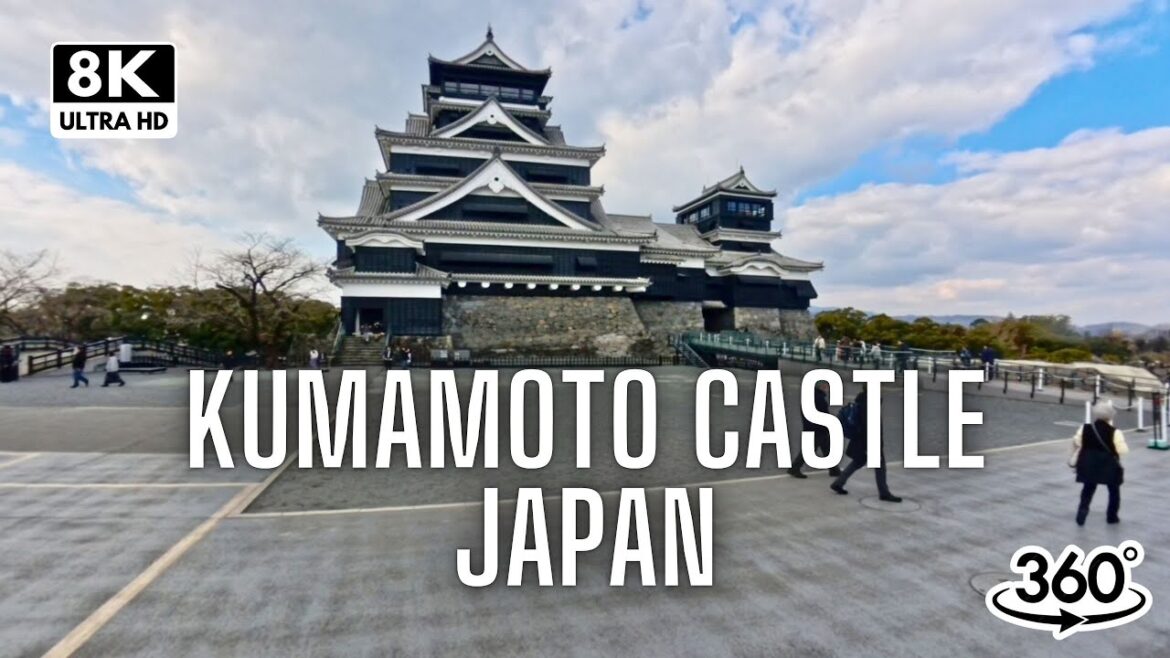Kumamoto Castle in 8K 360°: A Fortress of Power, Artistry, and Resilience
Step into history and explore Kumamoto Castle like never before — in immersive 8K 360°. Wander through the towering stone walls, intricate wooden interiors, and lush castle grounds rebuilt after the 2016 earthquake. This iconic symbol of Japanese resilience and samurai heritage comes alive in ultra-high definition, letting you look around freely and feel as if you’re truly there.
📍 Location: Kumamoto, Japan
🎥 Resolution: 8K | 360° immersive experience
✈️ Tag along on my travels:
📕 In-Depth Guide
Kumamoto Castle (熊本城, *Kumamoto-jō*) stands as one of Japan’s most famous and formidable castles, a masterpiece of feudal architecture and a symbol of the city of Kumamoto in Kyushu. Its origins trace back to 1601–1607, when it was constructed by Kato Kiyomasa, a renowned daimyo and military strategist during the Sengoku (Warring States) period.
Kato was not only a skilled warrior but also an innovative castle architect. He designed Kumamoto Castle with advanced defensive features, including curved stone walls (musha-gaeshi) that made it nearly impossible for enemies to climb, and wooden overhangs (ishi-otoshi) from which defenders could drop stones or boiling liquids on invaders. The castle complex originally featured 49 turrets, 18 yagura (watchtowers), and 120 wells, making it a self-sufficient fortress capable of withstanding prolonged sieges.
Despite its strength, Kumamoto Castle has not been immune to destruction. After the fall of the Tokugawa shogunate and during the Satsuma Rebellion in 1877, the castle became the site of a critical battle. Rebels led by Saigō Takamori laid siege to the castle, which was defended by Imperial troops. The castle held out for 53 days, but much of the original structure, including the main tenshu (keep), was destroyed in the fires of war.
In the modern era, Kumamoto Castle underwent major restoration. In 1960, a concrete reconstruction of the main keep was completed, housing a museum dedicated to the castle’s history. More extensive restoration work began in the 1990s, focusing on historically accurate reconstructions of turrets and walls using traditional materials and techniques.
Tragedy struck again in April 2016, when two powerful earthquakes hit the region. The castle sustained significant damage: stone walls collapsed, roofs slid off, and several structures were heavily cracked or destroyed. However, the disaster also reignited national pride and commitment to preservation. A large-scale, decades-long restoration project began, involving meticulous efforts to rebuild using original stones and historic blueprints. The main keep reopened to the public in 2021, showcasing not only the grandeur of feudal Japan but also the resilience of modern restoration.
Today, Kumamoto Castle remains a living monument—a blend of original remnants, reconstructed beauty, and the scars of history. It’s not just a tourist attraction, but a cultural heart of Kumamoto, embodying centuries of warfare, art, engineering, and recovery.


AloJapan.com